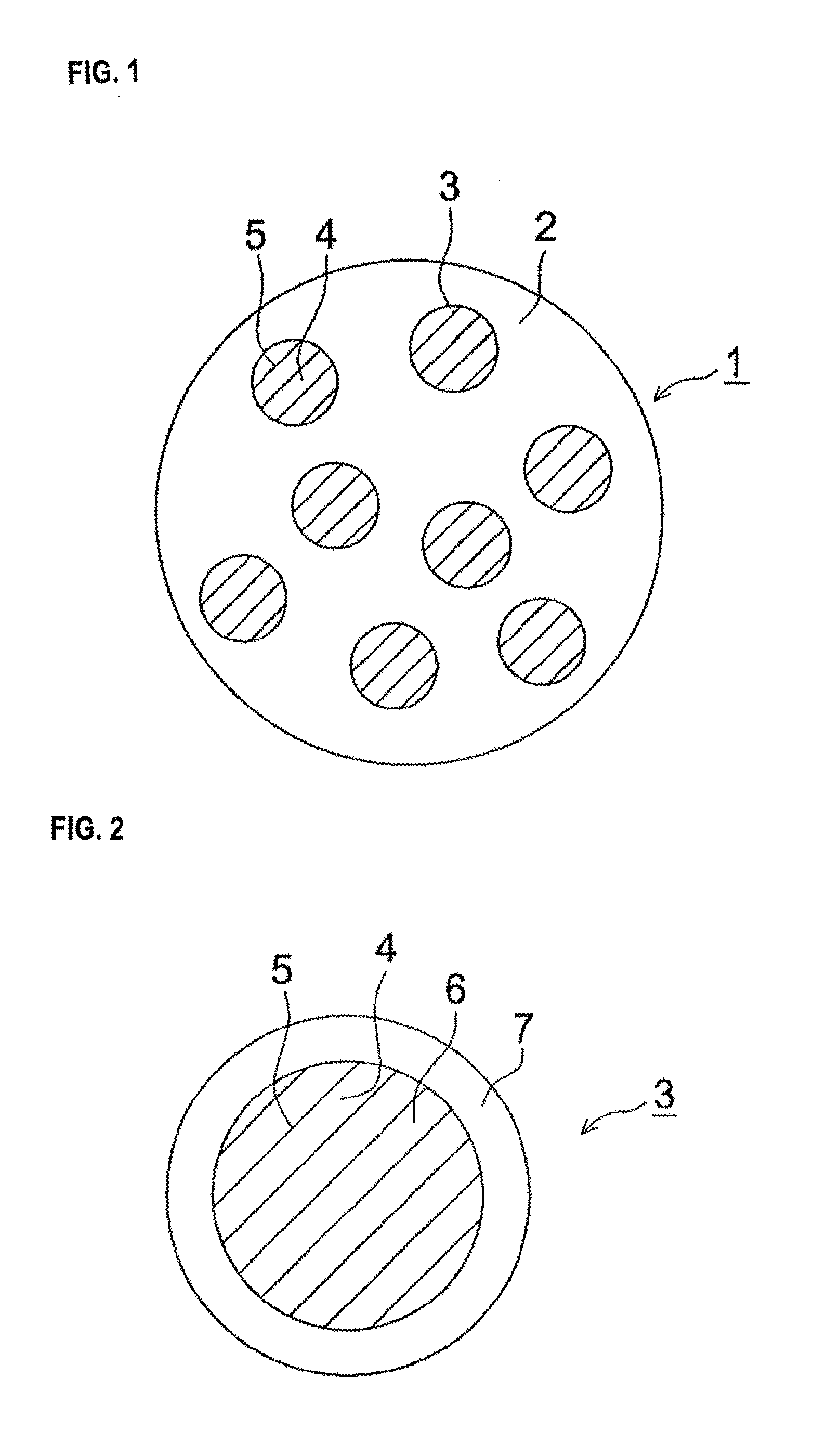Method for producing cyanoacetic acid, method for producing cyanoacetic acid derivative and method for producing metal containing compound
a technology of cyanoacetic acid and cyanoacetic acid derivative, which is applied in the preparation of carboxylic acid nitrile, chemistry apparatus and processes, and organic chemistry, etc. it can solve the problem of reducing the productivity of the product, the need to prepare a special condition for treating microorganisms, and the danger of soda cyanide in the handling of i
- Summary
- Abstract
- Description
- Claims
- Application Information
AI Technical Summary
Benefits of technology
Problems solved by technology
Method used
Image
Examples
example 1
Preparation of Cyanoacetic Acid
[0244]To a three-necked flask, were added ethyl cyanoacetate (20 g, 0.1768 mol) and pure water (100 ml) following p-toluenesulfonic acid monohydrate (1.7 g, 5 mol %), and the resultant reaction mixture was refluxed for 4 hr. Then, ethanol and water in the reaction mixture were removed by distillation using a Dean-Stark apparatus, while the reaction mixture was simultaneously heated for 6 hr. After completion of the reaction, the resultant aqueous reaction mixture was condensed under a reduced pressure at 60 to 70° C., thereby to yield a 6.0% cyanoacetic acid aqueous solution.
[0245](Analysis and Evaluation)
[0246]The reaction was traced by gas chromatography (GL Sciences Inc.: GC390). In the analysis, the calibration curve data on ethyl cyanoacetate and cyanoacetic acid were checked, and the end point of the hydrolysis reaction was set at the time when the content of ethyl cyanoacetate substantially reached 2 mol %. Similarly, the contained ethanol amoun...
examples 2-13
[0247]Following the same procedure as in Example 1, in Examples 2-13, an acid catalyst and an amount thereof as well as an ethanol amount at the end point of the hydrolysis reaction were variously modified.
example 14
[0262]The exemplary compound 5 was prepared in the same manner as in Comparative Example 6 by using cyanoacetic acid produced in Example 8. Note, all the preparation steps were conducted through a running manner without conducting the recrystallization the same as in Comparative Example 7. Here, the number of each step in Table 2 shows a reaction rate calculated based on the calibration curve in the HPLG analysis. In the second step, the byproduct (DD4M) was observed in 1.6% and the total yield from the second step to the fourth step was 82.9%.
PUM
 Login to View More
Login to View More Abstract
Description
Claims
Application Information
 Login to View More
Login to View More - R&D
- Intellectual Property
- Life Sciences
- Materials
- Tech Scout
- Unparalleled Data Quality
- Higher Quality Content
- 60% Fewer Hallucinations
Browse by: Latest US Patents, China's latest patents, Technical Efficacy Thesaurus, Application Domain, Technology Topic, Popular Technical Reports.
© 2025 PatSnap. All rights reserved.Legal|Privacy policy|Modern Slavery Act Transparency Statement|Sitemap|About US| Contact US: help@patsnap.com



